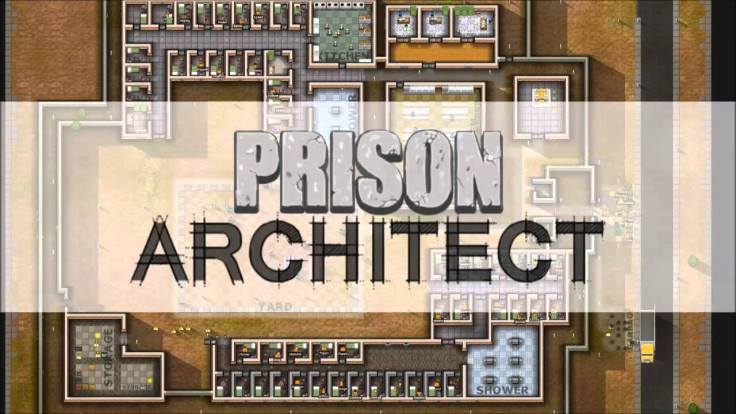In May 2015, iDigitalTimes’ Scott Craft sat down with Prison Architect producer Mark Morris and discussed the path of Prison Architect and the Prison Architect campaign. Among the topics covered was Plato. Morris likened the concept of his game to Plato’s The Republic, which contained the famous Allegory of the Cave .
"One of the things that I'm still not happy we've got quite right is [communicating] that the prison in Prison Architect is not set in any time or in any place," Morris told iDigitalTimes. "It is Plato's concept of a prison, rather than a commentary on any particular country's prison system.”
Plato’s cave examines man’s inability to recognize that the unknown exists. We’re not aware of the unknown unless we actively seek it out. Until we do, we can never know that there is more to know about a thing and we miss out on the true experience. In this sense the Prison Architect campaign mirrors Plato’s cave quite well, in that players would never know there is more to the game than what is presented to them.
A bit about my time with Prison Architect. I’m not some fly-by-night reviewer who slogged through eight hours and called it a day. I’ve logged 293 hours (and counting) into Introversion’s prison management sim. It is, by most accounts, a good game. It takes the concept of constructing a prison to nearly every logical conclusion, and the emphasis on reform is a nice counterbalance to the ethical dilemma posed by gamifying one of the ongoing blights of American society.
My disappointment isn’t so much rooted in the game itself, but in what little there is for long time players in the full release. The campaign is so simple, so cookie-cutter, it feels far more like an extended tutorial than it does a fully realized game. The chapters take you through an intriguing story but the tasks given the player are too rudimentary. Particularly the final chapter, which is ultimately just another sandbox mode. Prison Architect is a game capable of dizzying complexity. I would’ve liked to see more of that on display in the Prison Architect campaign.
For example, Prison Architect houses a prison informant system as part of your day-to-day activities. “Snitches get stitches” after all, so you need to keep an eye on your informants and make sure they don’t get overexposed. If they get compromised they usually end up dead. Yet this system doesn’t make an appearance in the campaign. And, shockingly, it’s not the only significant component of the Prison Architect experience you won’t find in the campaign.
Prisoners don’t try to escape.
Prisoner escapes are vital to Prison Architect’s sandbox mode. Not a day goes by it seems that I don’t have some prisoner somewhere trying to dig a tunnel under his toilet. In sandbox mode, managing escapes becomes a nearly full-time job and, even with stringent security measures like dog patrols, metal detectors and perimeter walls, players often must pause the game to manually inspect each prisoner for telltale signs of escape attempts (HINT: It’s the sleepy guys) and take apart his toilet to find the tunnel.
In the campaign, prisoner escapes have basically been removed. Outside the occasional prisoner running through an open gate, I didn’t encounter any serious escape challenges during the campaign. It both puzzles and saddens me that Introversion didn’t take the time to craft a campaign that would’ve presented an actual challenge to the players who have been a part of the Prison Architect early access period since 2012.
They did add Escape Mode but it, too, comes up short. In Escape Mode players assume the role of an inmate in one of their prisons and try to bust out. A rep system allows players to earn respect by winning fights and raising hell, and recruited inmates will assist you in your tunneling. I played a few hours across my various saved prisons and found that I build nearly escape proof prisons except for one flaw: it’s easiest to dash out an open gate. Tunneling is pointless.
Sure, I could sink more time into escape mode and try to learn the nuances of how to recruit a killer gang but, honestly, if I want a pixel art prison escape game I’ll just play The Escapists . Instead, I found myself dumping hours into a game mode that involved me spending lots and lots and LOTS of time in solitary because I kept getting caught with tools, weapons, etc.
Prison Architect improved a lot during its time in Early Access and it was a wonderful privilege to be a part of the growth and development of the game. But all of that effort needs a payoff and, sadly, the Prison Architect campaign doesn’t come close to realizing the potential of the sandbox mode. No gangs, no escapes and no significant challenge adds up to a criminal letdown for longtime fans. New players will enjoy getting their feet wet, but anyone who’s been on board since the beginning will get a distinct dropped-the-soap feeling by the time they finish the campaign and realized they likely spent $10 over launch price for an Early Access tease that didn’t deliver.
Is Prison Architect worth it? If you like sim games a la Theme Hospital then, yes, it’s a must buy. Curious players would be wise to wait for Steam Sales and longtime supporters don’t technically lose anything with the addition of the campaign. But we don’t really gain anything either.


















